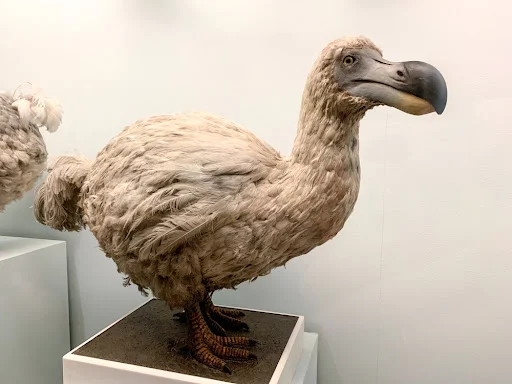Why We Should Care About Extincting Species
Extinction is the dying out of a species or a group of species. It is a natural process that has been occurring since life began on Earth. However, in recent times, human activities have accelerated the rate of extinction to alarming levels. According to some estimates, we are losing species at a thousand times the natural background rate. This means that we are witnessing the sixth mass extinction event in the history of life on Earth.
Why does this matter? Extinction is not only a loss of biodiversity, but also a loss of ecological services, genetic resources, cultural values, and potential solutions to global challenges. Extinct species can never be recovered or replaced. They are gone forever.
Some of the benefits that extinct species provide are:
Ecological services: Extinct species play important roles in maintaining the balance and functioning of ecosystems. They provide services such as pollination, seed dispersal, nutrient cycling, pest control, soil formation, water purification, climate regulation, and more. Without these services, ecosystems become less resilient and more vulnerable to disturbances and degradation.
Genetic resources: Extinct species are sources of unique genes and traits that can be useful for improving crops, livestock, medicines, and biotechnology. They also represent evolutionary potential and diversity that can help species adapt to changing environments and challenges.
Cultural values: Extinct species are part of our natural and cultural heritage. They inspire art, literature, religion, mythology, folklore, and education. They also contribute to our sense of wonder, awe, and connection with nature.
Potential solutions: Extinct species may hold the key to solving some of the most pressing problems facing humanity and the planet. For example, some extinct species may have had medicinal properties that could cure diseases, or biological mechanisms that could enhance energy efficiency or reduce pollution.
Some examples of extinct species are:
Passenger pigeon: A bird that was once the most abundant in North America but was hunted to extinction by the early 20th century.
Dodo: A flightless bird that was native to Mauritius but was wiped out by European explorers and introduced animals in the 17th century.
Tasmanian tiger: A marsupial predator that was native to Australia but was hunted to extinction by farmers and bounty hunters in the 20th century.
Baiji white dolphin: A freshwater dolphin that was endemic to China's Yangtze River but was driven to extinction by overfishing, pollution, and habitat loss in the 21st century1.
Pyrenean ibex: A wild goat that was native to Spain and France but was exterminated by hunting and disease in the 21st century.
Steller's sea cow: A large marine mammal that was related to manatees and dugongs but was hunted to extinction by sailors and fur traders in the 18th century.
Great auk: A flightless seabird that was native to the North Atlantic but was killed for its meat, feathers, and oil in the 19th century.
Mammoth: A hairy elephant-like animal that lived during the Ice Age but went extinct due to climate change and human hunting about 10,000 years ago.
Some causes of extinction are:
Human activities: Human activities lead to the loss of habitats, overexploitation of natural resources, pollution, introduction of invasive species, and climate change. These factors affect the survival and reproduction of animals by destroying their food sources, shelter, water quality, genetic diversity, and natural balance.
Natural disasters: Natural disasters such as volcanic eruptions, earthquakes, floods, droughts, fires, landslides, tsunamis, meteor impacts can wipe out large populations of animals in a short time. These events can also alter the climate and environment for long periods of time.
Evolutionary changes: Evolutionary changes such as genetic mutations, diseases, competition, predation can affect the fitness and adaptability of animals. Some animals may not be able to cope with these changes and become extinct.
Some solutions for preventing extinction are:
Conservation: Conservation is the protection and management of natural resources and habitats. It involves creating protected areas such as national parks and wildlife reserves where animals can live without human interference. It also involves restoring degraded habitats such as forests, wetlands, grasslands, and coral reefs. Conservation also requires educating people about the value of biodiversity and the threats it faces.
Sustainable use: Sustainable use is the use of natural resources in a way that does not deplete them or harm the environment. It involves reducing consumption, waste, and pollution. It also involves adopting practices such as organic farming, renewable energy, green transportation, and eco-tourism that minimize environmental impacts and support local communities.
Legislation and regulation: Legislation and regulation are the laws and policies that govern the use of natural resources and protect the rights of animals. They include banning or regulating activities such as hunting, fishing, logging, mining, and trade that threaten wildlife. They also include enforcing penalties for violations and providing incentives for conservation.
Research and monitoring: Research and monitoring are the collection and analysis of data on the status and trends of biodiversity. They involve conducting surveys, inventories, assessments, and experiments to understand the ecology and behavior of animals. They also involve developing and applying tools and technologies such as satellite imagery, GPS tracking, DNA analysis, and artificial intelligence to detect and prevent threats to wildlife.
De-extinction: De-extinction is the process of bringing back extinct species using biotechnology. It involves securing animal DNA from fossils, museum specimens, or living relatives and using methods such as assisted breeding, cloning, genome editing, and synthetic genomics to create new individuals. De-extinction can help restore lost biodiversity and ecosystem functions




















